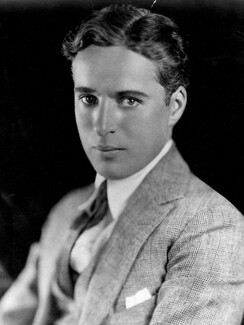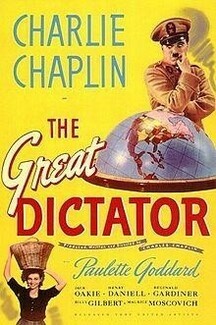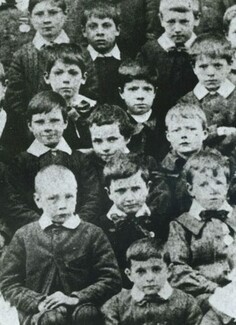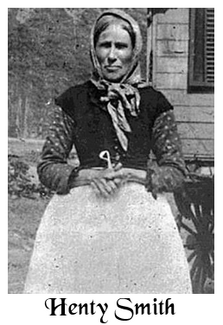Charlie Chaplin's Romani Roots - By Ian Hancock

While Romanies in the English midlands town of Smethwick, near Birmingham, tell of Charlie Chaplin’s having been born there in the nearby “Black Patch” Romani camp, details of the famous actor’s origins remain elusive. In researching for his book on the area, historian Edward Rudge interviewed more than 30 Romanies and wrote that he “often heard the Chaplin story.” (1) This was corroborated in a faded document from Tamworth (also near Birmingham) sent to Chaplin in the 1970s and signed by a Romani man named Jack Hill, and which made the same claim. Chaplin’s oldest surviving son Michael, now in his sixties, and who has visited Black Patch, believes the letter to be authentic; he wrote “my father kept that letter locked in a bedside table and it was only discovered after my mother’s death, and long after his own death . . . the letter must have been significant for him to have kept it.” (2) It was inherited by his daughter Victoria following the death in 1991 of Chaplin’s wife Oona O’Neill, and was kept in the family vault in Montreux in France. (3) Chaplin’s birth certificate has never been found, and it has generally been assumed that he was born in London in 1889.

There has been speculation too regarding his ethnic background; by 1915 it had become widely accepted in America that he was Jewish; he even has an entry in Who’s Who in World Jewry, together with a spurious biography; when he appeared in the 1940 film The Great Dictator in which he played the part of a Hitler look-alike, that identity was further reinforced. All of his films were banned in Nazi Germany based on the same mistaken assumption. In the earliest versions of the screenplay his character’s identity is unspecified, and it is only in later rewrites of the script that it became Jewish.
Many of the books that deal with Charlie Chaplin’s life don’t mention his Romani connection at all; others, such as Sid Fleischman’s Charlie Chaplin, the Funniest Man Alive (4) include a single ‘Gypsy’ reference but focus on his Jewish connection. This was certainly deep and personal; his third wife Paulette Goddard (Levy) was Jewish (5), and he spoke often and passionately about the plight of the Jews in Europe. But he also made it clear in interviews and in his autobiography that he was not himself Jewish. His biographer Joyce Milton (6) wrote “I think awareness of his Romani heritage was an important part of Chaplin’s self-image and critical to his art . . . I suspect that Hitler’s persecution of the Gypsies was very much on Chaplin’s mind when he conceived the screenplay of The Great Dictator. However, he never said this publicly” (7).

Until they had a legal dispute over the authorship of that film (which he lost), Chaplin was closely involved professionally with a man named Konrad Bercovici (Berkowicz), a Romanian-born writer who has authored a number of fanciful books with a Romani theme (including The Story of the Gypsies and The Gypsy in Me). In an article that appeared in 1925, he stereotypically attributed some of Chaplin’s behaviour to his Romani ‘blood,’ claiming that “his great love for music, his great gift of improvisation and his instinctive familiarity with musical instruments pointed to gypsy origin . . . he is unable to stay in one place without coming and going . . . Charlie will suddenly begin to play his violin or dance and sing. Who else would do that but a gypsy?” (8)
Chaplin himself was devious about his background. He has said that he was born in France and that his mother was half Spanish; at other times that he was born in London. There’s even a vague suggestion that he was born in South Africa. To date, however, the only available information points to London as his place of birth.

Chaplin admits that when he was a child, references to any Romani ancestry were strictly downplayed, though this is predictable in families who have left that connection far behind them in the family tree. The genealogist Edward Ellis, who was the first to bring attention to the Jack Hill letter, suggested that Chaplin may have decided to lock it away not wanting his Romani connection to become widely known; (9) the increasing negative media attention being paid to Roma might certainly have become a factor in later years. Another Hollywood personality who spoke openly about his Romani ancestry during his early life but who became silent on the matter as his career progressed was Bob Hoskins. Chaplin was certainly not reluctant to talk about it as a younger man, and throughout his life would privately visit Romanies whenever he could. There are personal anecdotes and references in his papers to several visits he made to Roma during time spent in San Francisco, New York, England and France. For example, the British filmmaker Ivor Montagu, who was close to Chaplin in the late ’20s, said that he told him of visiting a “Gypsy fortune teller” who warned him that his third marriage would be an unhappy one (he and Paulette Goddard separated shortly after the appearance of The Great Dictator, and she married actor Burgess Meredith). His older brother Sydney married a woman known as “Gypsy,” whose family was from Budapest. In the 1970s his daughter Geraldine was guest of honour at a banquet hosted by Roma in Yugoslavia, and she acted the part of a Romani fortune teller in the 2010 film The Wolfman.
What is known with more certainty about his family is that his maternal grandfather was an itinerant shoemaker named Charles Frederick Hill who may have been Irish - though coincidentally he shares the same surname with that on the enigmatic letter - and whose grandmother’s maiden name was Mary Terry. A related figure, in whose home Chaplin’s mother Hannah sometimes lived after she and his father had separated when he was an infant, was a “general dealer” named John Hodges, perhaps a brother of Mary Terry's first husband, Henry, who died before she married Charles Hill.

Chaplin's father, also named Charles, died at the age of 37. He was the son of a Spencer Chaplin, who in October 30th 1854 married the seventeen-year-old Romani girl Ellen Elizabeth Smith in the Suffolk town of Ipswich. Although she died in 1873 long before Charlies Jr. was born, he wrote in his autobiography “Grandma was half Gypsy . . . I remember her as a bright little old lady who always greeted me effusively with baby talk.” (10) Unless he had Romani ancestry on both sides of his family, he was probably mistakenly referring to his maternal grandmother. John McCabe writes “Grandfather Hill’s wife was half Spanish, half Gypsy, the latter blood a well kept secret; Charlie did not reveal the fact until his middle age. The knowledge delighted him, as it would any artist.” (11) It is unlikely that Ellen was half Spanish. “Smith” is a common British Romani family name, but it is noteworthy that the Black Patch Romani community in Staffordshire were Smiths; the matriarch in the 1880s was Sentenia ‘Henty’ Smith, who died in 1907. There are Romani families today named Hill in Derbyshire and Yorkshire.
By Ian Hancock
Professor Ian Hancock OBE (Romani: Yanko le Redžosko) is a linguist, Romani scholar and political advocate, and is one of the main contributors in the academic field of Romani studies.
(Lead photograph: Chaplin in 1918, already a global star. By Unknown author - [1], Public Domain, https://commons.wikimedia.org/w/index.php?curid=19239073)